Breathing in the apocalypse
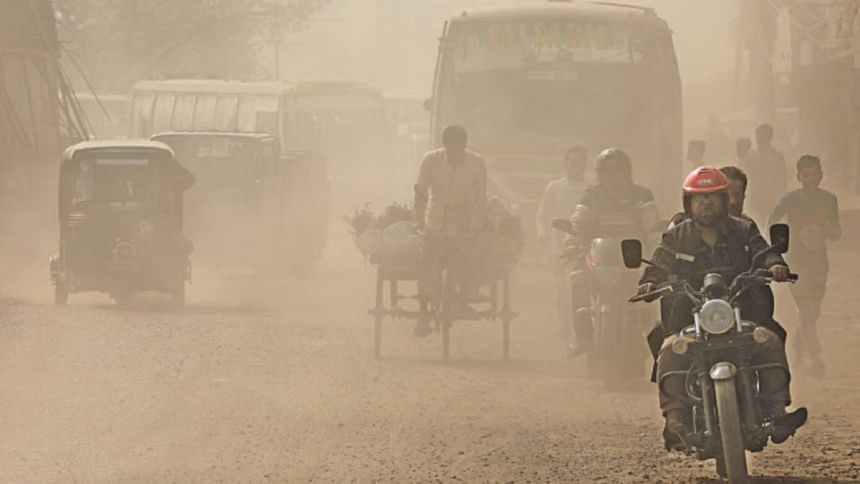
Once upon a time, in a city that might resemble Dhaka (but we'll never tell), the air was so thick with dust and smoke that birds forgot how to fly. Instead, they wheezed their way from branch to branch like asthmatic opera singers. Here, the citizens, armed with little more than apathy and makeshift masks, engaged in a strange dance of denial while their beloved metropolis ascended to the throne of "World's Unhealthiest Air"—an accolade, no doubt, worthy of being inscribed on smog-covered billboards.
In this dystopian drama, the Air Quality Index (AQI) routinely surpasses 200 and frequently ventures into the hazardous 300+ range. Need proof? Let's look at February 2025, Dhaka's own "Season of Smog" (a phrase Dickens might have coined, had he lived here). On February 4, Dhaka topped the list of the world's most polluted cities with an AQI score of 251 by 8:31am. Iraq's Baghdad, Kyrgyzstan's Bishkek, and Democratic Republic of the Congo's Kinshasa occupied the second, third, and fourth spots on the list, respectively. This comes after February 3, when Dhaka claimed the top spot with an AQI score of 243. Even on February 2, the city managed the first place with an AQI of 374.
If TS Eliot's "The Love Song of J. Alfred Prufrock" were rewritten for Dhaka, it might open this way: "Let us go then, you and I, where the smog hangs heavy in the sky." But unlike Eliot's wistful melancholy, Dhaka's fog—a sinister blend of PM2.5, PM10, and shattered dreams—doesn't bother with poetry. It claws at throats, coats lungs, and leaves a metallic taste of despair.
Take, for instance, the city's infamous brick kilns. They're the Darth Vaders in Dhaka's air saga—breathing heavy, lethal fumes into the atmosphere. Despite years of governmental "mandates" (a word here meaning "polite suggestions ignored by all"), these kilns continue to operate with all the stealth of a marching band. Then again, if the kilns are the main villains, Dhaka's vehicles are the bumbling sidekicks. Picture a scene straight out of Mad Max: Fury Road, with the city streets overrun by decrepit buses belching black plumes of despair and rickshaws navigating a post-apocalyptic maze of honking chaos. Unlike the sleek, chrome vehicles of Mad Max, these are rusting tin cans that seem to run on pure spite.
Dhaka boasts over 1.6 million registered vehicles, many of which operate without proper emission control. Studies show vehicular emissions has major contribution in the city's total air pollution. Singapore, a city once plagued by vehicular chaos, solved its problem with strict emissions standards and congestion pricing. Dhaka, on the other hand, seems to operate on the principle of "Let's see how much worse it can get." Why ban old buses when you can keep them as mobile history exhibits?
Then there's the construction industry, Dhaka's answer to a live-action reenactment of The Great Gatsby. Just as Jay Gatsby's extravagant parties masked his inner emptiness, Dhaka's relentless construction boom masks an underlying neglect of urban planning. The result? A city that grows taller but breathes shallower. Policies are drafted, but enforcement is a ghost that haunts bureaucratic corridors, much like Banquo's ghost in Macbeth. Consider the recurring promises to plant trees, introduce electric vehicles, or modernise industries. These vows are like Frodo's journey in The Lord of the Rings—long, arduous, and seemingly destined never to reach their destination. Only, instead of battling orcs, the government battles… well, themselves.
If the government is Hamlet, the citizens are the townsfolk of Monty Python and the Holy Grail. When faced with existential threats, their response is often, "It's just a bit of bad air. I've had worse." Armed with the latest TikTok filters but no actual air filters, they navigate the streets as if oblivion were a fashion statement. Even as AQI scores climb higher than the number of Dhaka's unfinished megaprojects, many remain resigned. Perhaps they've embraced Scarlett O'Hara's mantra: "I'll think about it tomorrow." But tomorrow, as we all know, never comes.
The numbers paint a grim picture. According to the fifth edition of the State of Global Air report, air pollution was responsible for over 236,000 deaths in Bangladesh in 2021 alone. Respiratory diseases, heart conditions, and strokes are on the rise, with children and the elderly bearing the brunt. Bangladesh recorded over 19,000 deaths of children under five due to air pollution-related conditions in 2021, UNICEF reports.
What if Dhaka's air pollution crisis could inspire its own cinematic universe? Imagine a Marvel-style team-up: the Enforcers (government inspectors), the Innovators (green tech companies), and the Avengers (citizens armed with petitions and asthma inhalers). Together, they fight the ultimate villain: "the Smogster."
In the final act, Dhaka's citizens storm the streets, demanding change. Industries comply, vehicles are upgraded, and construction sites become paragons of cleanliness. The city's skyline emerges, not as a hazy silhouette, but as a beacon of hope.
Of course, this is just a fantasy, but so was the idea of humans walking on the Moon. If Neil Armstrong could take one giant leap for mankind, surely Dhaka can take one small step towards breathable air. Let's just hope it doesn't require a spacesuit.
H. M. Nazmul Alam is lecturer at the Department of English and Modern Languages of International University of Business, Agriculture and Technology (IUBAT). He can be reached at [email protected].
Views expressed in this article are the author's own.
Follow The Daily Star Opinion on Facebook for the latest opinions, commentaries, and analyses by experts and professionals. To contribute your article or letter to The Daily Star Opinion, see our guidelines for submission.

 For all latest news, follow The Daily Star's Google News channel.
For all latest news, follow The Daily Star's Google News channel. 

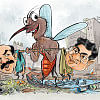
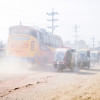

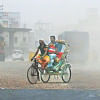
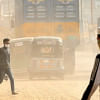


Comments